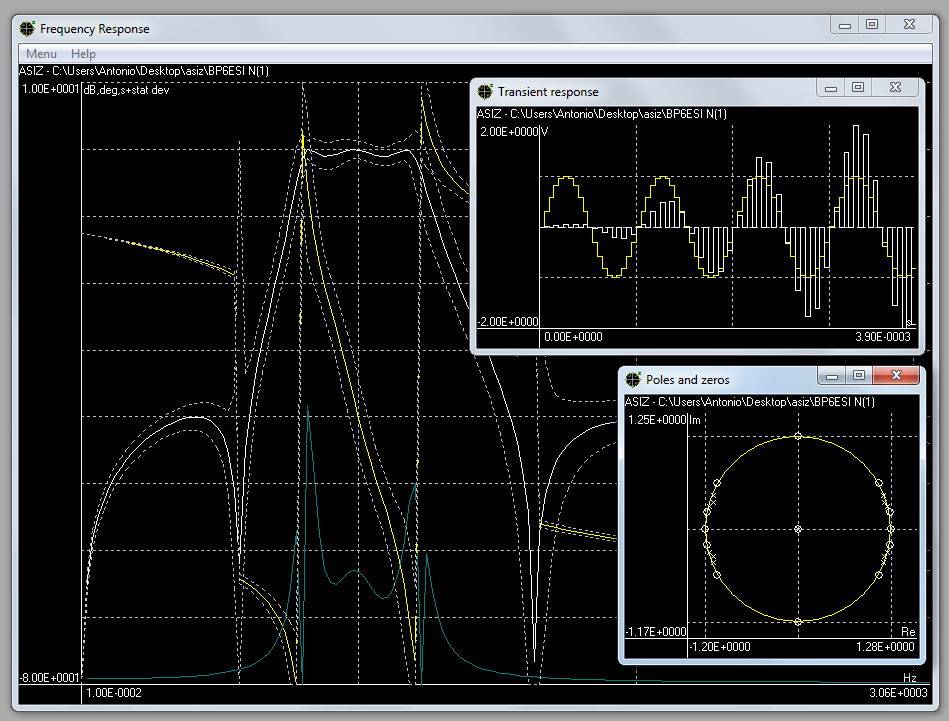
ASIZ is a switched-current and switched-capacitor circuit analysis program. It computes transfer functions in ratio-of-polynomials form in the z-domain, poles and zeros, frequency responses, transient responses, frequency-domain sensitivities, and output signal spectrum.
Four executable versions are available: the new Windows version, the old DOS version, a somewhat faster DOS version compiled with GNU C (djgpp), and a version for Sun workstations, also compiled with GNU C and using the XView interface. All the versions are complete (with minor differences in resources), and work in the same way, with similar graphical interfaces.
The EdFil editor is included in all the versions. It provides easy circuit entry in schematic form, requiring only a minimum of information, typing, and care with the schematic layout.
The use of the ASIZ program is free for academic, noncommercial purposes. For commercial use, please contact the author.
The files are compressed in the "zip" format.
There is also a small FAQ (for the old versions) with answers to common questions about ASIZ.

Screen shot from the Windows version
The DOS versions can be run under the program DosBox on modern versions of Windows, under Linux, etc. Screen from the old DOS version.
Created: 1996
Last update: 24/8/2015
Developed and Maintained by Antonio Carlos
M. de Queiroz